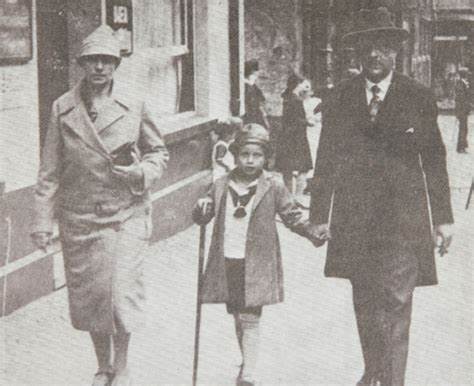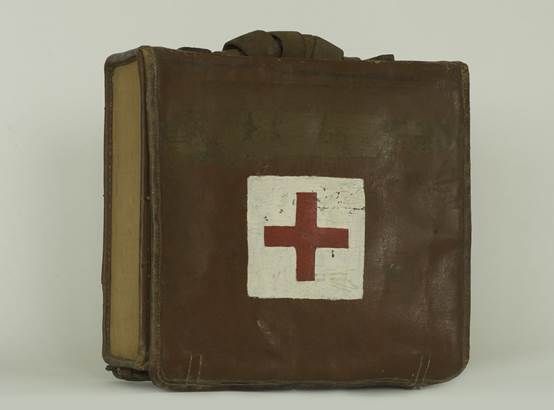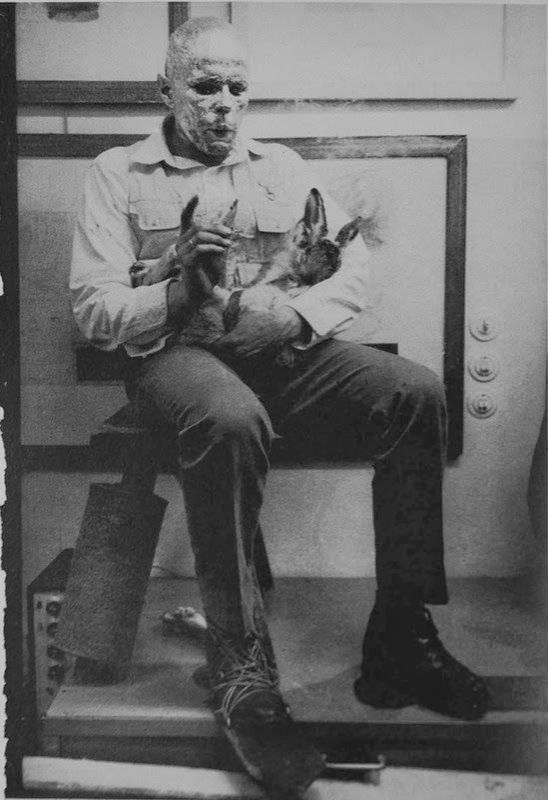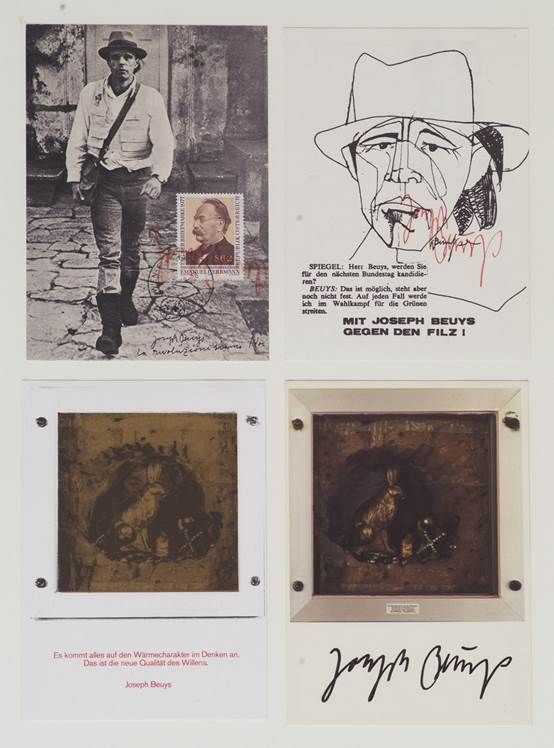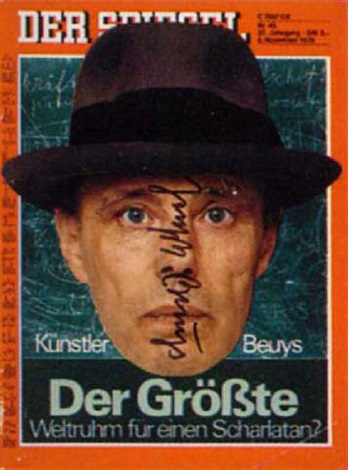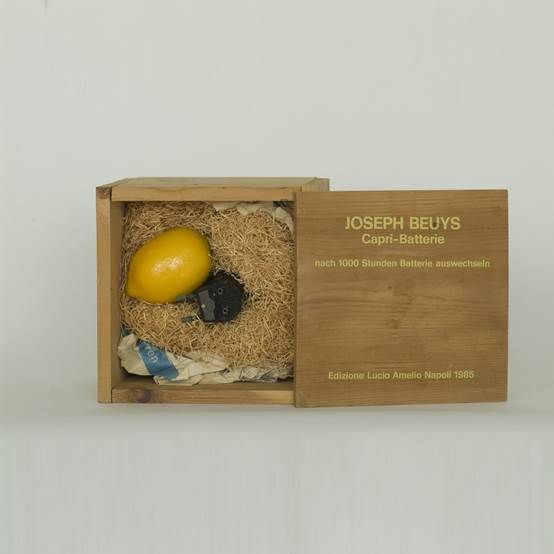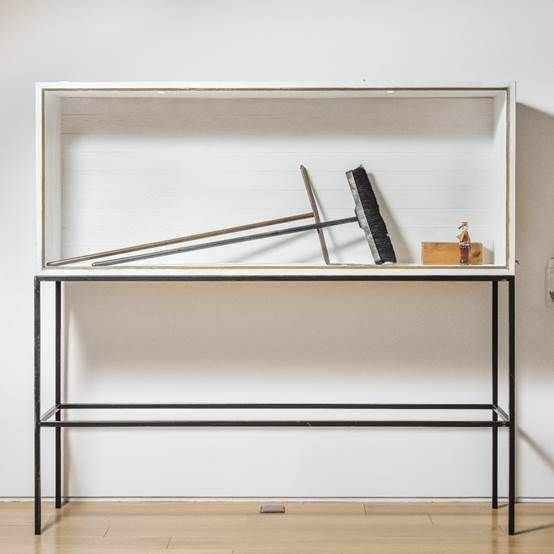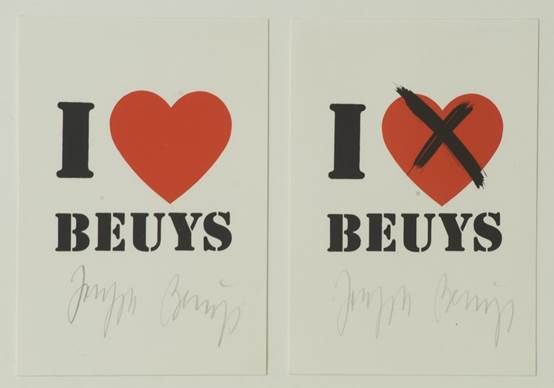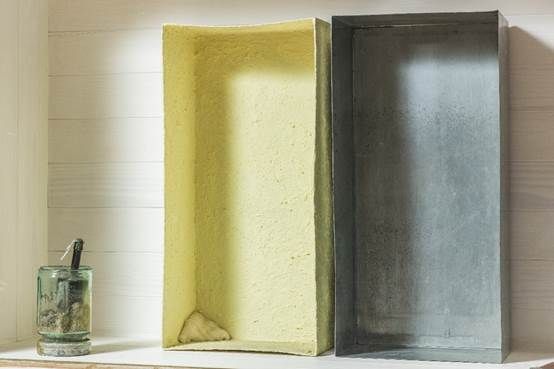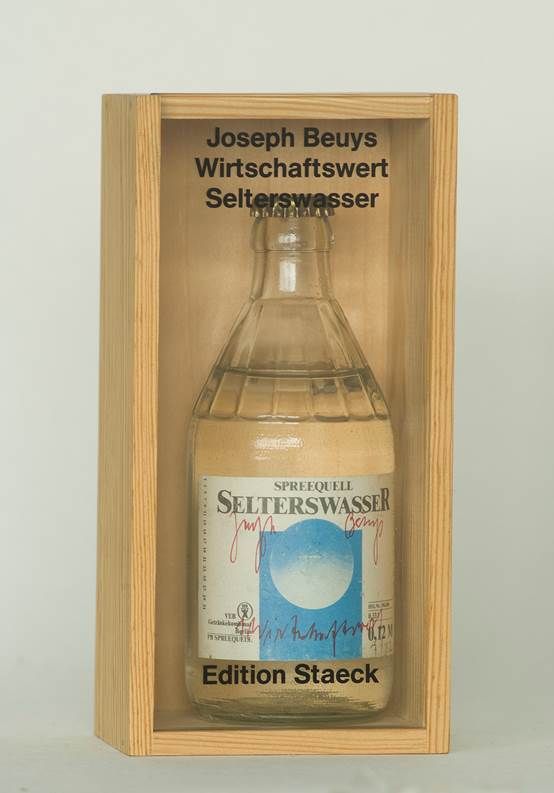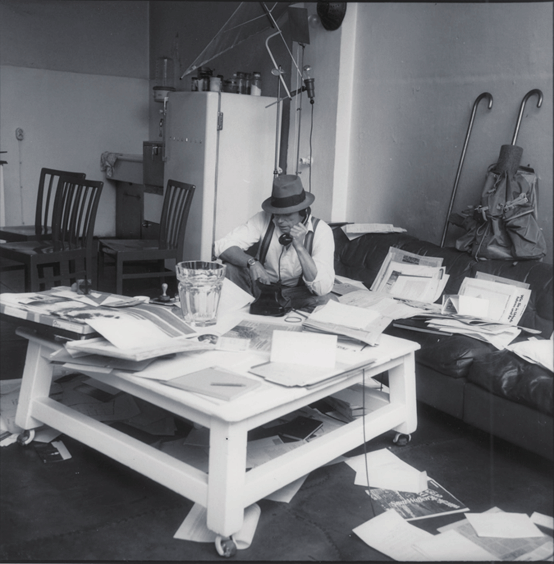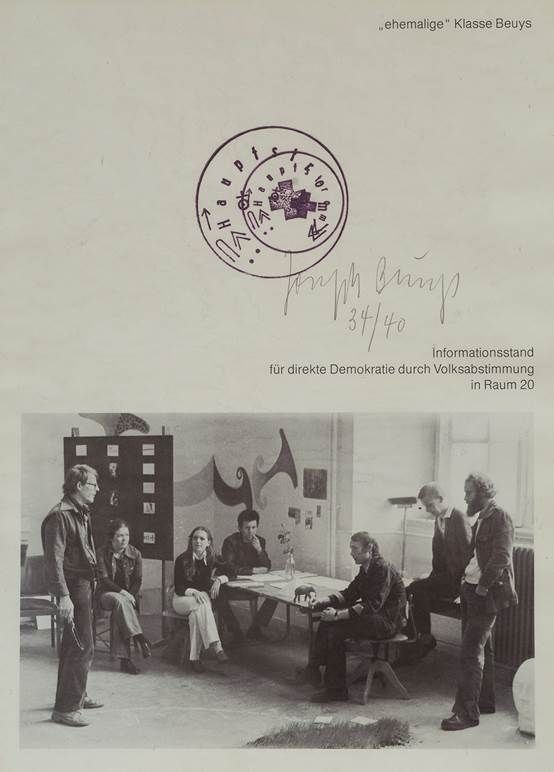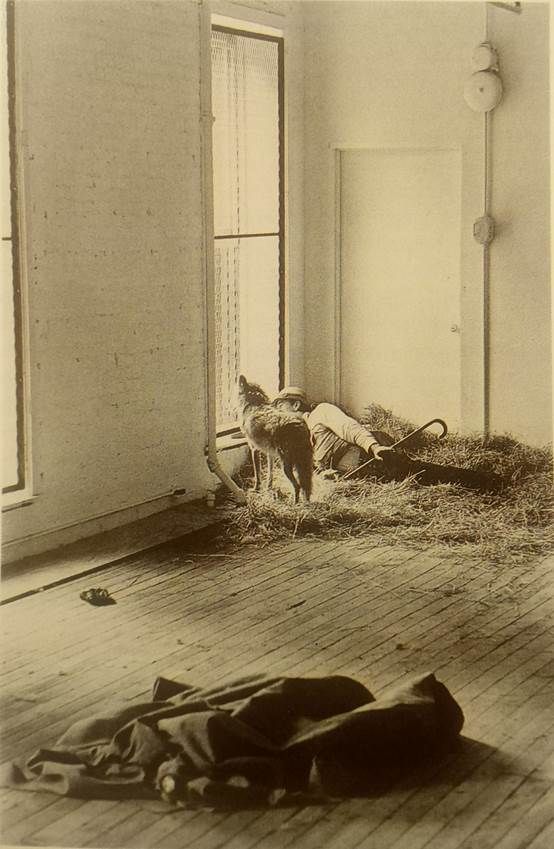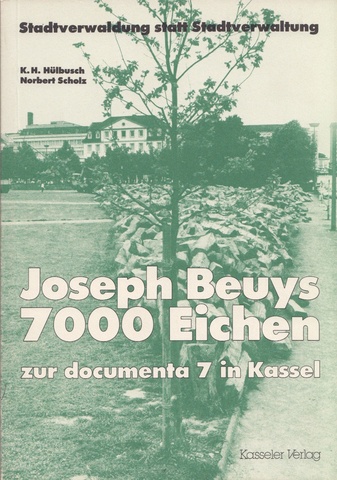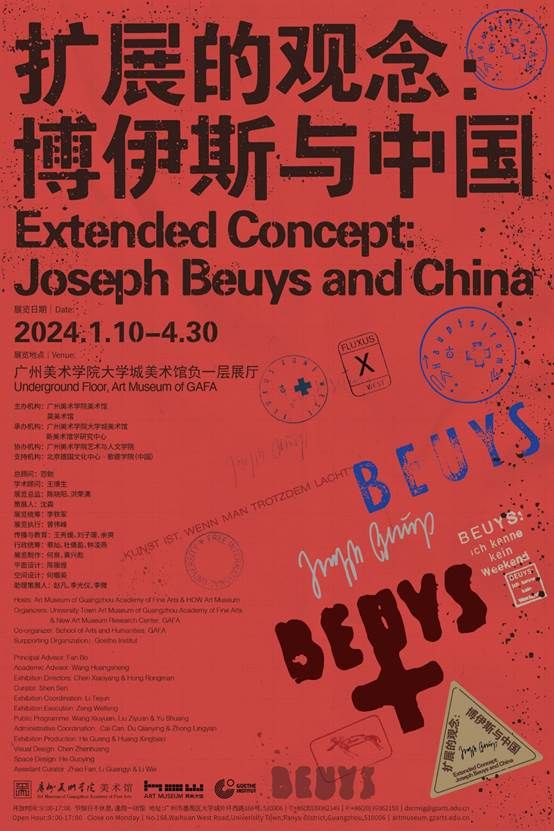
前言
Foreword
在近乎于对生存现实的忧虑与危机意识里,博伊斯以艺术行动回应世界的变化和时代的创伤。博伊斯希望通过挑战传统的意义和秩序观念,超越日常生活中的惯习,重塑艺术与生活之间的联系。因此,在受到诺瓦利斯、鲁道夫·斯坦纳等哲学思想以及20世纪社会与政治话语的影响后,博伊斯的思考也逐渐显现出“扩展的艺术观念”(Erweiterter Kunstbegriff)的影子,并从传统的现代艺术中出走,拓宽了关于“何为艺术”的讨论。
In a sense of existential anxiety and crisis, Beuys responds to the changes of the world and the trauma of The Times with his artistic actions. By challenging traditional notions of meaning and order, Beuys hopes to transcend the habits of everyday life and reshape the connection between art and life. Therefore, influenced by the philosophical ideas of Novalis and Rudolf Steiner, as well as the social and political discourse of the 20th century, Beuys' thinking gradually showed the shadow of "Erweiterter Kunstbegriff" (expanded concept of art), and moved away from traditional modern art to broaden the discussion on "what is art".
顺着这一思想线索,博伊斯把“雕塑”的文化含义和价值延伸至人智学和社会学的维度,为以往不属于雕塑范围的物质赋予了具有社会改造潜力的精神力量和象征意义,并明确表明“雕塑是对人类思想的塑造”。就此,他进一步提出了“社会雕塑”(Soziale Plastik)的可能性,把世界和社会的面貌看作一种时刻处于进化过程、不断更新迭代的可塑状态,并强调人人都可以成为形塑社会有机体的一部分。
Following this thread of thought, Beuys extended the cultural meaning and value of "sculpture" to the dimensions of anthroposophy and sociology, endows the material that did not belong to the scope of sculpture with the spiritual power and symbolic significance with the potential of social transformation, and clearly states that "sculpture is the shaping of human thought". In this regard, he further proposed the possibility of "social sculpture" (Soziale Plastik), which regards the face of the world and society as a shapeable state that is always in the process of evolution and constantly updated and iterated, and emphasizes that everyone can become a part of the shaped social organism.
博伊斯看到了现代理性对人类认识论的壁垒和技术宰制,试图以艺术为手段去寻找和发展关于世界变化的母题,在混乱与秩序的两极之间探寻思想、感情、意志重新统一的平衡状态。所以,无论是早期对于非传统材料的探索式运用,还是后来在团体组织、民主参与、社会介入等行动中对在场性和参与性的强调,博伊斯重置了作品与观众之间的关系,也追问了人类历史的进程、社会机制的变迁,以及通往精神领域的知识途径。他的实践不仅仅关乎艺术,更是关乎集体、文化和人类存在的全面思考。展览将分为以下五个板块:
Beuys saw the barriers of modern rationality to human epistemology and the domination of technology, and tried to use art as a means to find and develop the theme of world change, and to explore the balance state of the reunification of thought, emotion and will between the two poles of chaos and order. Therefore, whether it is the early exploratory use of non-traditional materials, or the later emphasis on presence and participation in group organization, democratic participation, social intervention and other actions, Beuys not only resets the relationship between the work and the audience, but also questions the course of human history, the change of social mechanisms, and the intellectual approach to the spiritual realm. His practice is not only about art, but also about holistic thinking about collectivity, culture, and human existence. The exhibition will be divided into the following five sections:
其中,展览的第一板块:“神话/象征”,将聚焦博伊斯的生平经历,反映艺术家对人类生存状况的思索与担忧,以及对于生命和死亡命题的特殊体悟。博伊斯曾作为德国空军的服役士兵亲身体会了战争的残酷,他的创作总是与神话、仪式、宗教信仰、民间传说等心灵区域相关,并且展示了其在人智学背景下对自然科学和精神科学的个人化思考。这些对生命本质核心的探索与感知,表露着博伊斯创作脉络中悲怆的人本主义内涵,构成了其意识图像的基础和底色,也是他在未来进一步发展雕塑理论和实践观念的先声。
Among them, the first section of the exhibition, "Myth/Symbol", will focus on Beuys' life experience, reflecting the artist's thoughts and worries about human existence, and his special understanding of life and death. Beuys experienced the cruelty of war personally as a soldier in the German Air Force, and his works are always related to the spiritual areas such as myths, rituals, religious beliefs and folklore, and show his personal thinking on natural and spiritual sciences in the context of anthroposophy. These explorations and perceptions of the essential core of life reveal the tragic humanistic connotation in the context of Beuys' creation, constitute the basis and background of his conscious images, and are also the precursor of his further development of sculpture theory and practical concepts in the future.
展览的第二板块:“扩展/观念”,追问艺术家和艺术创作的生产性。博伊斯挑战了传统艺术观念的物质形式,并拓展了艺术的表达方式。60年代后,博伊斯与来自不同国家和学科背景的艺术群体,在电影、表演,音乐和视觉艺术领域进行了许多打破时空和材料限制的探索,并逐步演化出更具个人风格的艺术表达系统,发展了“扩展的艺术观念”。在这个理念中,现成品、情境、表演、行为、概念、过程都被纳入艺术的范畴,艺术创作也从传统媒介和观念中解放出来,转移至物质与非物质形式的可塑过程。
The second section of the exhibition, "Expansion/Concept", asks the produce process of the artist and the artistic creation. Beuys challenges traditional notions of material form in art and expands the ways in which art can be expressed. After the 1960s, with artistic groups from different countries and disciplinary backgrounds, Beuys carried out many explorations in the fields of film, performance, music and visual art that broke the restrictions of time, space and materials, and gradually evolved a more personal style of artistic expression system, and developed an "extended artistic concept". In this concept, ready-made products, situations, performances, behaviors, concepts and processes are all included in the category of art, and artistic creation is liberated from traditional media and concepts and transferred to the shapeable process of material and immaterial forms.
展览的第三板块:“社会/行动”,将拓宽至博伊斯对欧洲社会、乃至人类处境和社会机制的研究。博伊斯把艺术的概念扩展到日常生活中,并把艺术推向更深层次的社会思想性。他强调,社会本身是一件可以塑造和表达的艺术品。博伊斯的实践几乎都力求通过讨论、协商的方式来实现公共参与。这些议题以人的创造力和社会改造力为落脚点,应结合二战后西方世界对社会机制的反思以及在废墟上重建精神家园的内在需要而去理解。
The third section of the exhibition, "Society/Action", will broaden Beuys' study of European society, and indeed of the human condition and social mechanisms. Beuys extended the concept of art to everyday life and pushed art to a deeper level of social thought. He emphasized that society itself is a work of art that can be shaped and expressed. Beuys' practice almost always strives to achieve public participation through discussion and consultation. These issues, based on human creativity and social transformation, should be understood in the light of the Western world's reflection on social mechanisms after World War II and the intrinsic need to rebuild spiritual homes on ruins.
展览的第四板块:“博伊斯与教育”,将聚焦博伊斯艺术教育、公共美育及社会动员的思想主张,艺术家在延续“扩展的艺术”和“社会雕塑”理念的基础上,高喊“人人都是艺术家”的口号,倡导公众参与,并以思想、言语、身体、行动造益人类的生活。因此,他的教育行动和实验往往包含着强烈的实验性,呼吁唤醒个体的创造力与社会改造能力。1961年至1972年,博伊斯担任杜塞尔多夫艺术学院雕塑教授,组建“创造性及跨领域研究自由国际大学(F.I.U.)”,推动了德国高等学校教育改革。整体而言,教学活动和教育思想仍然是博伊斯投身社会事业的一种手段,始终如一地贯穿着其艺术理念和思想脉络。
The fourth section of the exhibition, "Beuys and Education", will focus on Beuys' ideas of art education, public aesthetic education and social mobilization. Based on the concept of "expanded art" and "social sculpture", the artist shouts the slogan "Everyone is an artist", advocating public participation and benefiting human life through thought, speech, body and action. Therefore, his educational actions and experiments often contain strong experimentation, calling for the awakening of individual creativity and social transformation ability. From 1961 to 1972, Beuys was professor of sculpture at Kunstakademie Düsseldorf, where he founded the "F.I.U.", which promoted the reform of higher education in Germany. Overall, teaching activities and educational ideas are still a means for Beuys to devote himself to social causes, and they consistently run through his artistic ideas and ideological threads.
上世纪80年代之后,博伊斯逐步进入了中国当代艺术界的讨论范围,从某种程度上,博伊斯的艺术观念回应了“后现代之后的艺术”和“艺术如何介入社会”等问题在当代合法性,也启发了中国当代艺术向着在“全球化”和“本土性”之间构建人文关系的方向转变。
After the 1980s, Beuys was known by Chinese contemporary art circle. To some extent, Beuys' artistic concept responded to the today’s legitimacy of such issues as "art after postmodernism" and "how art intervenes in society", and also inspired the transformation of Chinese contemporary art towards the direction of building humanistic relationship between "globalization" and "localization".
展览的第五板块:“博伊斯与中国”,希望提出更为当下的问题,就广州美术学院本身而言,学院长期以来的教学工作与实践互动中,博伊斯的影响是隐形且交织的,博伊斯的切身行动,以及对艺术教育、社会介入和国家发展的关注,也都呼应着美院师生的担当与时代责任。与此同时,博伊斯的社会形塑也表现着人文主义的信念,潜移默化地为每一位教学工作者继续坚持理想主义的教育道路给予了无形的鼓励。沿着这条路径,我们通过展览搭建一条与博伊斯展开跨时空对话的通道,梳理已有研究文本,并在广东艺术的地域图景中,寻找与博伊斯艺术创作相呼应的社会参与式项目,在展品研究的基础上拓宽观察范围,并最终回到中国语境中的艺术与社会现场。
The fifth section of the exhibition: "Beuys and China" hopes to raise more current issues. As far as Guangzhou Academy of Fine Arts is concerned, Beuys' influence is invisible and intertwined in its long-term interaction between teaching work and practice. Beuys' immediate actions, as well as his concern for art education, social intervention and national development, also echo the responsibility of GAFA's teachers and students and the responsibilities of The Times. At the same time, Beuys' social construction also shows the belief of humanism, imperceptiently encouraging every teaching worker to continue to adhere to the educational path of idealism. Along this path, we build a channel for cross-time and space dialogue with Beuys through the exhibition, sort out the existing research texts, and look for social participatory projects that echo Beuys' artistic creation in the regional landscape of Guangdong art, broaden the scope of observation based on the research of the exhibits, and finally return to the art and social scene in the Chinese context.
策展人:沈森
Curator: Shen Sen
部分展出作品
SOME WORKS ON SHOW
